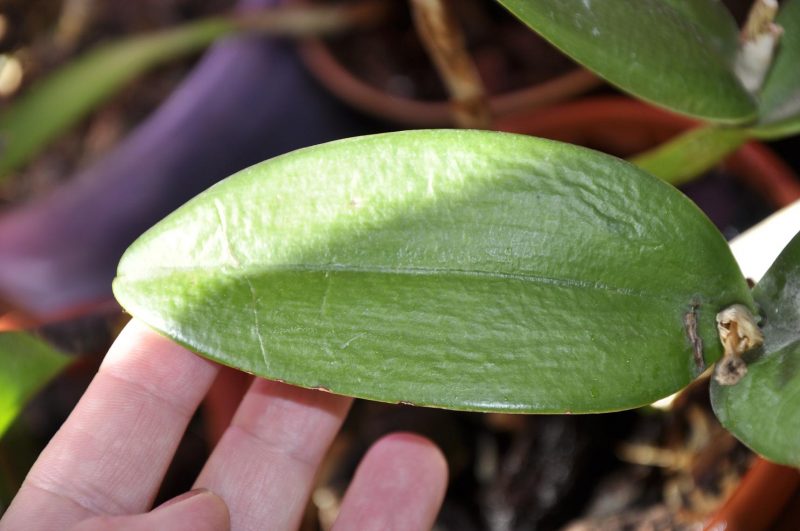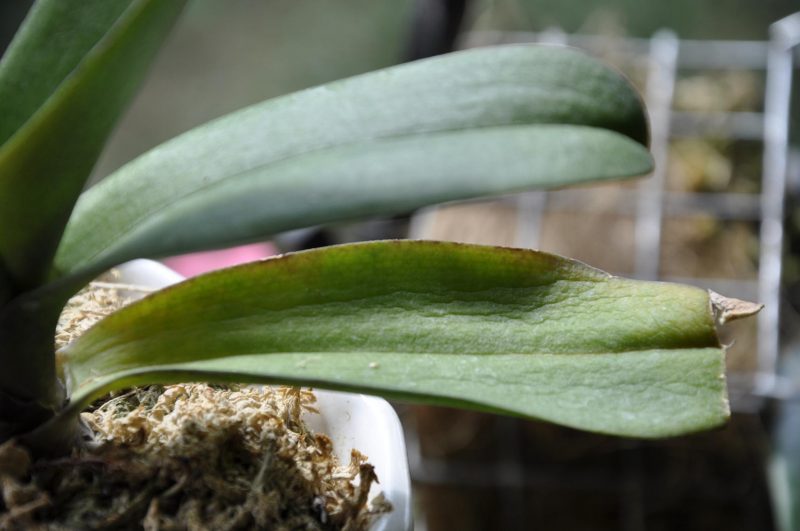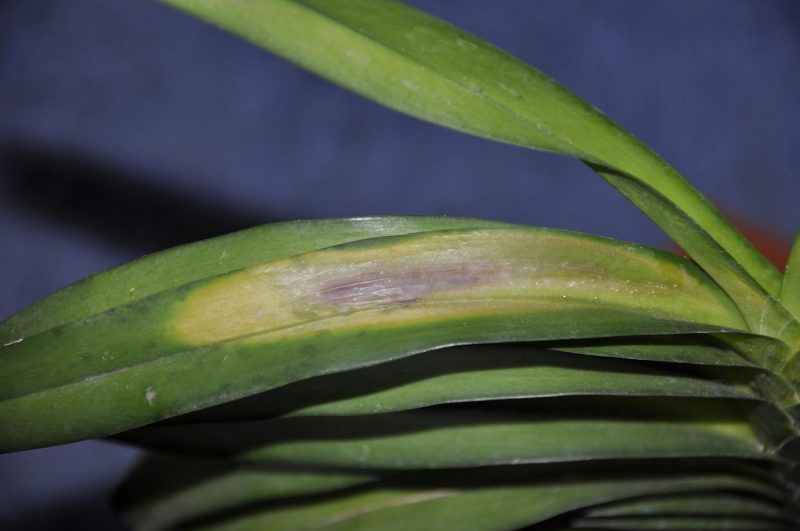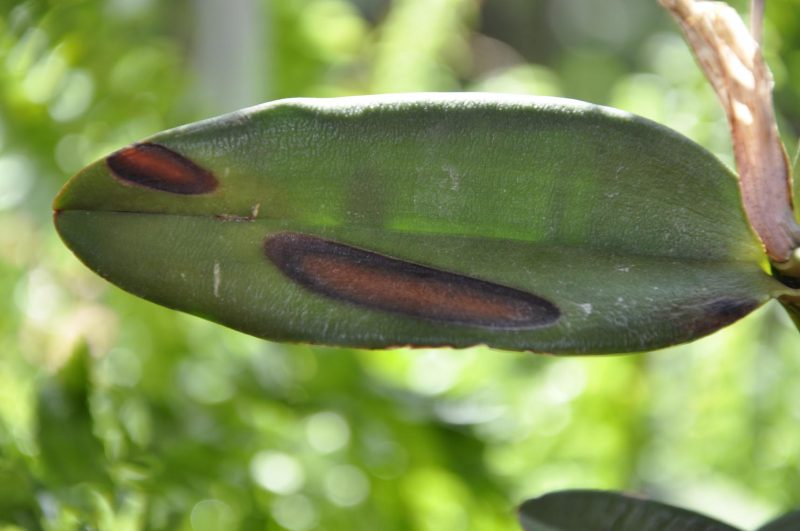The ability to identify orchid diseases in time and start the right treatment helps to maintain a home collection of beautiful flowers. The condition of plants is affected by care, lighting, humidity. Sometimes sick orchids have to be reanimated, creating special conditions.
Material Content:
Orchid Diseases and Pests
The cause of orchid disease can be insect pests, fungi, viruses, bacteria. Mistakes in agricultural technology often provoke the onset of bacterial or fungal diseases.

The fact that not everything is in order with the plant is often indicated by its appearance - drooping or yellow leaves, incomprehensible spots, deformation and growth retardation, lack of flowering.
Orchid Pests:
- herbivorous mites;
- thrips;
- scale insects;
- aphids;
- mealybug;
- mushroom mosquitoes;
- gastropods
- wood lice;
- nails
It is interesting:mealybug on an orchid: how to get rid
Common diseases:
- cymbidium mosaic;
- Cattleya mosaic;
- root rot;
- rust;
- Fusarium rot;
- anthracnose;
- leaf spot;
- black, brown, gray rot.
Orchid diseases and their treatment require changing living conditions. With improper care, various spots appear on the leaves and the root system dies.
Leaf Disease: Symptoms, Prevention and Treatment
The most common problem is the loss of leaf turgor in an orchid. When the leaves fade, the plant looks almost dead. Caring flower growers try to reanimate a flower by watering it. Usually, it does not bring any positive results.

If you get a wilted plant from a flower pot, you can see the roots rotten in whole or in part.
To help the orchid, it is necessary to cut off the dead part of the root system and carefully remove all dry scales that can cause further decay.
If there are rotten spots on the orchid, they also need to be carefully cut. All sections and cleaned areas must be treated with an antibiotic. You can buy any of them in a pharmacy (for example, "Streptocid"), crush 2 tablets and mix with 1 tsp. water. With the resulting solution, lubricate the problem areas on the orchid.
When water stagnates in the outlet of leaves during improper watering, the growth point may rot. In this case, it is necessary to cut out everything rotten to living tissue, sprinkle sections with an antibiotic powder and reduce watering.
Orchid Viral Diseases
About fifty viruses dangerous to orchids are known. The diseases caused by them are incurable. A characteristic sign of infection is the appearance of spots and strokes on the leaves, growth retardation, deformation of the plant.

The carriers of infection can be insects, such as aphids. A plant may become ill when dirty tools or planting containers are used in working with it.
To prevent the disease, it is necessary to destroy insect pests on the orchid, to disinfect tools with alcohol. Having discovered diseased specimens, they need to be isolated and destroyed.
How to make a diagnosis by external signs
It is difficult to diagnose an orchid by its single appearance. The same symptoms can be caused by errors in care, the activity of insect parasites, fungal or bacterial diseases. Therefore, for treatment, sometimes it is necessary to apply a set of measures to restore the plant to life.

Description of some problems and their causes:
- Yellowing of the leaves is caused by the natural aging of orchids, insufficient watering, and the death of the root system.
- Silver plaque appears on the leaves as a result of a spider mite or an excess of nitrogenous fertilizers.
- Brown spots on the leaves are a sign of fungal disease.
- Black spots - the cause of their appearance may be the spraying of leaves at cold air temperature and poor ventilation or black rot.
- Loss of turgor - leaves sometimes wither due to insufficient watering, low humidity or, conversely, from excess moisture in the substrate and the death of the roots.
- Small strokes and dots on the leaves cause viral diseases or insect pests.
- Sticky buds are a sign of an orchid becoming infected with a worm or scabies, which give off a lot of honey dew.
The cause of spots on the leaves may also be an unbalanced nutrition of the plant, the use of insecticides, hypothermia or sunburn.
Orchid treatment at home
For the treatment of phalaenopsis with a dead root system, a long time and special conditions for resuscitation are necessary.

- The damaged part of the flower is cut off, all sections are sprinkled with any antibiotic.
- The treated orchid is placed in a small home-made greenhouse. It can be made from a 5 liter can, cut into 2 parts.
- At the bottom of such a jar lay pieces of bark, on top is a sphagnum moss, well soaked and wrung out, and then an orchid. Top cover the structure with a cut-off can top.
- A greenhouse with a plant is placed in a well-lit place where there is bright diffused light. In winter, it is imperative to arrange illumination in order to push the orchid to growth. Lighting should be at least 12 hours a day.
- Every day you need to ventilate the greenhouse with an orchid. To do this, unscrew the lid on the bank for 1 or 1.5 hours.
- Moss in a container with an orchid is sometimes moistened slightly from the spray gun so that it does not dry out and is not too wet.
- The air temperature is maintained between 23 - 27 ° C.
- Orchid leaf plates in a greenhouse can be cut in half.
For the treatment of dendrobium, from which 1 bulb remained, a slightly different method of resuscitation is used. The surviving root is placed in a container with bark and slightly moist moss horizontally. They do not cover anything from above, the plant has enough moisture, which is contained in the thickened root. After a while, children will appear from each kidney.
Ways to control flower pests
Viral diseases of orchids are incurable, but they are quite rare. More often the culture suffers from bacteria, fungi and insects. They fight bacterial rot with antibiotics, fungicides with fungi, insecticides help against insects, and acaricides from ticks.

Recommended drugs:
- At the first signs of tick infection, the plant is treated with Fitoverm or Aktofitom.
- For fungal diseases, treatment with Fundazol is necessary.
- Orchids are treated with Aktara, Fitoverm or Apache from the worm and thrips.
- To combat aphids, the plant is sprayed with tobacco infusion with soap or actellik.
- Fighting gastropods with mollusks with the help of molluscicides - "Mesurol" or "Metaldehyde."
Woodlice, which can damage all parts of the orchid, are caught on bait from apples or beer.
How to repair a damaged orchid
To restore an orchid left without roots or leaves, a greenhouse is used. Orchids that are in intensive care are not recommended to be cold. There should be no drafts and temperature drops.

It is advisable to feed sick specimens with fertilizer for orchids with a high nitrogen content.
For most orchids, a warm shower is helpful (water temperature is not higher than 40 ° C). The plant is rinsed under it for 10-15 seconds, then placed in a warm room without drafts until completely dry. It is advisable to take a shower during the active growth of an orchid.












